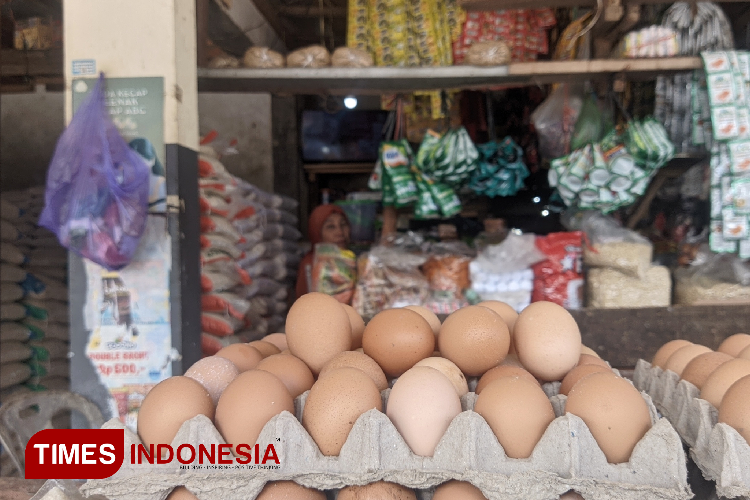TIMES JATIM, JAKARTA – Fermentation is one of the oldest methods used to preserve food. This process relies heavily on the role of microorganisms such as filamentous fungi, bacteria, or a combination of both in anaerobic conditions.
Fermentation transforms carbohydrates into final metabolites like organic acids, alcohol, and carbon dioxide. The fermentation process not only preserves vegetables for extending their shelf life but also enhances food safety and nutritional value and improves the texture and organoleptic qualities of food, including flavor and aroma.
Various types of fermented vegetables are found all over the world, depending on the raw materials used, such as radishes, cucumbers, cabbage, mustard greens, kale, and more. The most common fermentation process for vegetables includes dry salting or brining.
This method not only extends the shelf life of vegetables but also improves food safety, enhances nutritional value, and improves the texture and organoleptic qualities such as flavor and aroma.
Vegetable fermentation tends to occur naturally or through the use of starter cultures, which can last from several days to months. The quality of fermented vegetables is determined by the metabolism of microbial populations (lactic acid bacteria and yeast) during the fermentation process.
Kimchi
One of the most popular fermented vegetables today is kimchi, originating from Korea. This dish has been a staple in Korea for thousands of years. Its unique flavor, combining natural sourness and spiciness, has made it a global sensation. Kimchi is made from vegetables like napa cabbage, radish, kale, and green onions.
These vegetables are fermented using salt and combined with chili powder, garlic, and ginger. This combination produces a tangy flavor that stimulates the appetite. Additionally, fermented vegetables offer numerous health benefits for the human body.
Health Benefits of Fermented Vegetables
Fermented vegetables offer a wealth of health benefits. This is due to the fermentation process utilizing lactic acid bacteria, which provide prebiotic benefits.
According to the FAO in its 2001 Report of a Joint FAO/WHO Expert Consultation on Evaluation of Health and Nutritional Properties of Probiotics in Food, Including Powder Milk with Live Lactic Acid Bacteria, prebiotics produced by lactic acid bacteria deliver numerous health benefits.
These prebiotics can boost microbial activity in fighting intestinal pathogens, lower cholesterol levels, enhance antioxidant activity, as well as anticancer and immunomodulatory activities.
Mechanism for Kimchi’s Fermentation
Kimchi fermentation is triggered by the growth of lactic acid bacteria during storage. These bacteria break down the sugars contained in the vegetables into lactic acid, which gives kimchi its sour taste. This fermentation process occurs naturally, without the need to introduce bacterial cultures into the vegetables.
This natural process occurs when napa cabbage (sometimes substituted with radish, kale, or green onions) is mixed with salt and left at room temperature for several weeks. During this incubation period, beneficial bacteria grow and begin to convert the natural sugars in the vegetables into lactic acid.
In the early stage (1-2 days), aerobic bacteria (which require oxygen) work to reduce the oxygen levels in the vegetables. This process will continue if the container is tightly sealed. In the next stage (3 days onward), after oxygen levels have decreased, anaerobic bacteria like Lactobacillus start to proliferate.
These bacteria are responsible for the actual fermentation, where lactic acid is produced. When lactic acid forms, the perfect sour taste and prebiotic content emerge.
Duration for Kimchi’s Fermentation
The level of sourness in kimchi depends greatly on the fermentation duration. Kimchi fermented for 1-2 days will have a fresher taste, not too sour, and a crunchy texture, similar to fresh vegetables.
However, kimchi fermented for weeks will have a more intense sourness, a softer texture, and a higher prebiotic content. During the initial stage of fermentation, kimchi is placed at room temperature to accelerate the activity of aerobic bacteria in reducing oxygen levels.
After a few days, kimchi is stored at cooler temperatures to slow down the activity of anaerobic bacteria, thus slowing the fermentation process. The fermentation process will continue until the vegetables eventually spoil.
By: Putri Wulandari Zainal, PhD, Lecturer at the Department of Agricultural and Biosystems Engineering, Faculty of Agricultural Technology, Universitas Andalas.
Translated by: Rara Nabila Azzahra
| Pewarta | : |
| Editor | : Khodijah Siti |

























